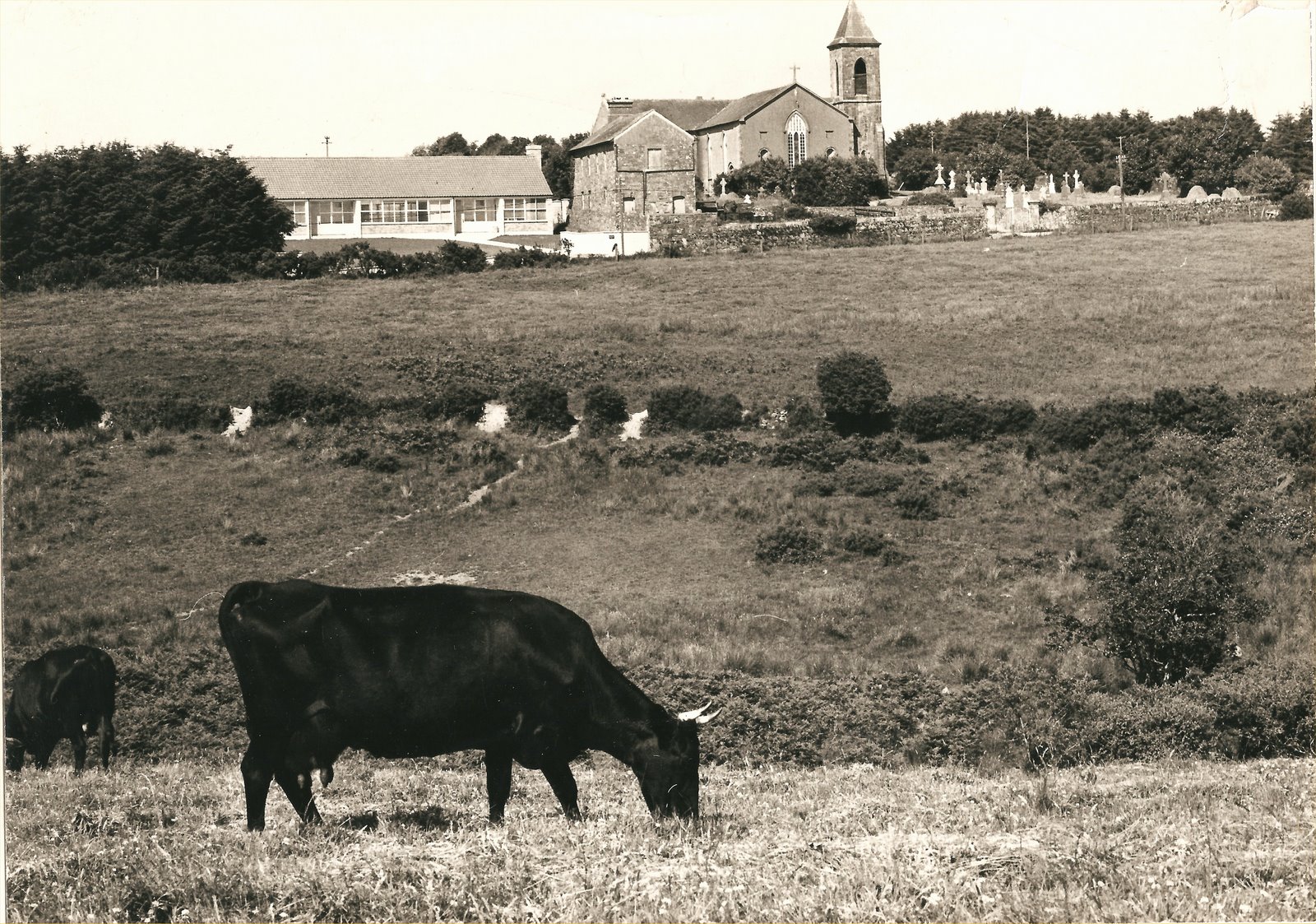On a cold, dark foggy and misty night in January 1898, the “Dunvegan” of Chatham met her faith 50 yards off the strand in Ballymacart Lower, Old Parish. The “Dunvegan” of Chatham was a New Brunswick 3 Mast Barque – 819 tons tall ship which had started her journey from Barry Dock, in Cardiff a few days previously to go to New Orleans. The ship had in its hold a 1,000 tonnes of coal and other general cargo.
Captain George Bell was a mariner of renown and had set sail from Cardiff, little did he realise that this was to be the last voyage of his beautiful vessel, and for an unknown reason, was miles off of his original course. Evening fell cold and drizzly, the crew retreated to the warmth of their quarters to rest from the harsh winter winds, during the night a dense fog descended on the “Dunvegan” and with visibility down to a few yards, the captain ordered the fog siren to be kept blowing. The vessel was now fast approaching the Old Parish coast, heading for imminent disaster.
On this faithful night, Mr. Nugent and his family, who lived at the cliff top at Ballymacart Lower, were awakened by the eerie sound of a doomed fog horn.
As it was high tide the ship came very close to the cliff face without the captain knowing. When suddenly out of the fog and mist loomed the cliffs of Ballymacart Lower. With a terrible crunching, scraping sound that could be heard quiet clearly from the Nugent household, the stricken vessel became caught on the jagged rocks.
The Nugent family rushed from their beds at the noise, hastily dressed and preceded towards the cliff top, below they could hear the crew as they cried for help. Without thinking of his own safety, Mr Nugent scrambled down the cliff face with a rope. This he secured to some rocks and the first of the crew began to make the hazardous climb to the top. After what seemed like an eternity the entire crew reached safety, with the Captain, his wife, and their 10 year old daughter been landed in a “basket”.
From here all the crew were taken to the home of Mr. Nugent, where they were fed and dried. The following morning the Captain and his crew returned to the “Dunvegan” for their personal belongings. The crew were then taken to Dungarvan, but the captain; his wife and daughter remained in the Nugent household for 3 days. In appreciation to the Nugent family, the captain presented them with the ship’s clock. This clock is still a prized possession within the Nugent family. Thankfully due to the quick action of the Nugent family, tragedy was averted.
As there was a considerable amount of Brandy on board the vessel, the captain requested that someone needed to stay guard over the wreckage. Word was sent to Kiely’s Cross R.I.C station, which was then located across the road from Kiely’s Cross Public House. Two armed constables arrived to guard the ship. Later the same day some men arrived by boat from Ardmore to loot the Brandy and only retreated when threaten with firearms.
A number of days later, Mr. Fuge of Glencorran House, Ardmore, purchased the vessel for a price of 10 Guineas. And with a fleet of small boats, the entire cargo and furnishings were removed form the once proud “Dunvegan”, leaving only a hull. The owner of the “Dunvegan” of Chatham was a Mr. George McClound: Captain was Mr. George Bell, a native of Canada; 1st Mate was Mr. Rudolph Belmore, a German; 2nd Mate was Mr. McKensie from Nova Scotia; Mr. Barret of Youghal. Other crew members came from Skibbereen, one from New Ross and one from Kilkenny. On this occasion the crewmembers were saved from the clutches of the deep sea by a series of lucky breaks.
To the sailor of the day, being shipwrecked was an occupational hazard. Once again the sea has been both kind and cruel. This was the life of the men who followed the tall ships.
There were three anchors onboard the “Dunvegan”, two of which were recently salvaged. One was taken to Dunmore, Co. Waterford; the other was brought to Ardmore, Co. Waterford. This is situated over looking the boat cove in Ardmore and the cruel coast line of Old Parish. When this anchor was taken from the sea, a large lump of coal was wedged to the end of the anchor and through the years of both substances in constant contact, it eroded a large amount of the anchor. The lump of coal was on show in the Dunvegan bar in Ardmore for many years afterwards. The remaining anchor lies buried in the cliffs at Ballymacart Lower.
Sunday, February 17, 2008
Subscribe to:
Post Comments (Atom)

No comments:
Post a Comment